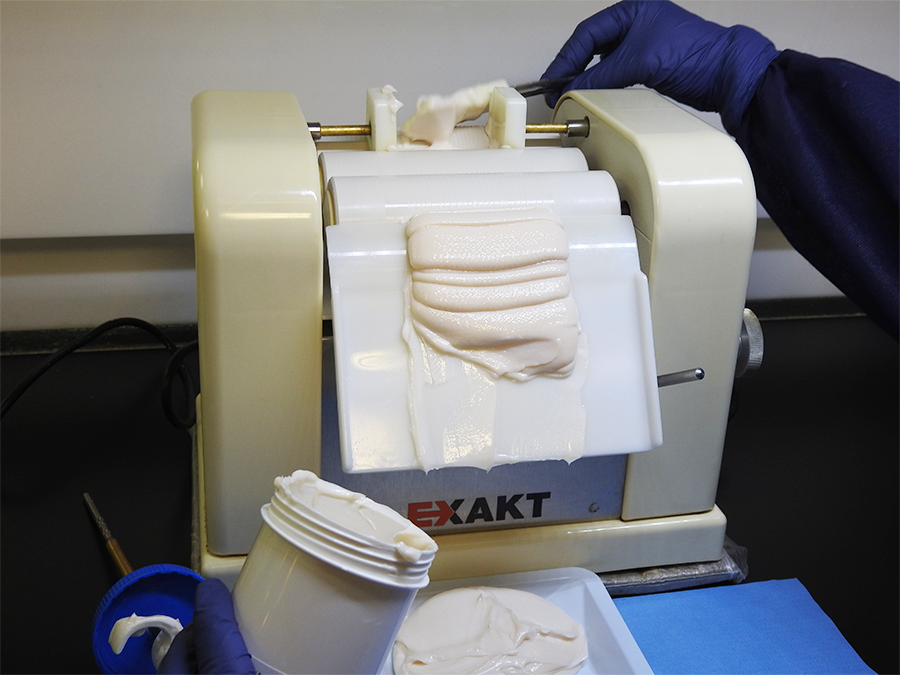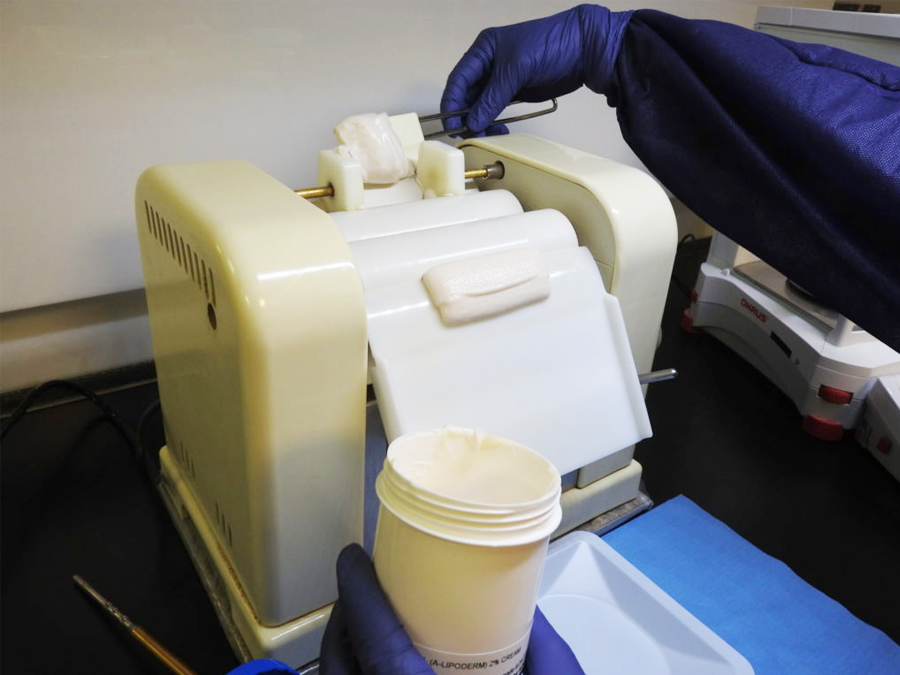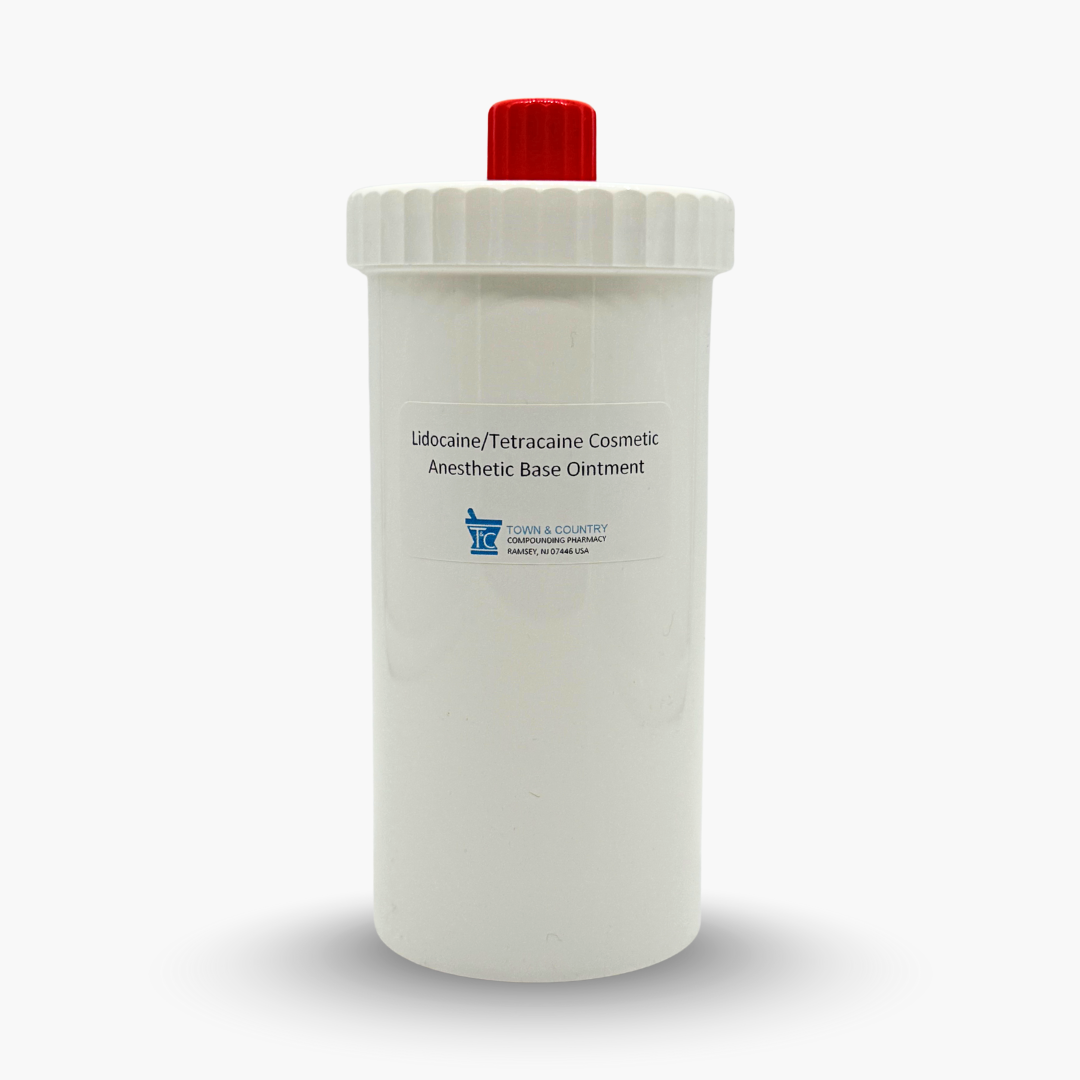
How Compounded Topical Numbing Creams and Anesthetics Support Safer, More Comfortable Cosmetic Procedures:
Morpheus8®, MonaLisa Touch®, and More
When it comes to aesthetic services like Morpheus8®, MonaLisa Touch®, laser procedures, and injectable therapies, patient comfort is paramount. At Town & Country Compounding, we specialize in creating high-quality topical anesthetic formulations that help providers deliver optimal care while ensuring their patients have the most comfortable experience possible.
The growing role of topical anesthetics in cosmetic procedures
Practitioners increasingly use topical anesthetics to decrease the pain associated with superficial dermatologic, aesthetic, and laser procedures. As non-invasive cosmetic therapies become more popular and sophisticated, the demand for effective pain management grows accordingly. Modern aesthetic procedures can achieve remarkable results, but patient comfort remains a critical factor in success and satisfaction.
Why topical anesthetics matter
Topical numbing agents are essential tools in modern aesthetic medicine. They work by potentially temporarily blocking nerve signals in the skin, reducing discomfort during procedures. The right topical anesthetic may transform a potentially uncomfortable procedure into a tolerable — or even comfortable — experience, improving patient satisfaction and compliance with therapy plans.
Our specialized approach
Town & Country Compounding has developed unique methods for creating compounded topical anesthetic prescriptions specifically for patients undergoing Morpheus8® and other cosmetic procedures, especially those involving micro-needling or lasers. Our expertise in formulating these specialized anesthetics sets us apart and ensures optimal outcomes for both practitioners and patients.
Convenient for your practice: These formulations require patient-specific prescriptions and can be shipped and billed directly to your office if desired, streamlining the process for busy practices.
We ship vitamins and OTC products to all states, and we are licensed to fill and ship prescriptions to over 20 states across the country.
Common aesthetic procedures using topical anesthetics
Microneedling and radiofrequency
Morpheus8®
As we age, our skin begins to lose elasticity, with wrinkles, lines, and sagging appearing. Morpheus8® by InMode is an innovative service that combines micro-needling with radiofrequency energy. The device releases radiofrequency energy into the deeper layers of the skin, causing controlled heating that stimulates the natural production of collagen, elastin, and hyaluronic acid.
This process helps to tighten skin and smooth wrinkles, resulting in a more youthful appearance. Because Morpheus8® involves both needling and thermal energy penetrating into the deeper skin layers, anesthesia is crucial for patient comfort.
Other RF microneedling and traditional microneedling
Various microneedling procedures — including traditional collagen induction therapy and other radiofrequency microneedling devices — require topical anesthesia for optimal patient comfort and success.
Injectables
Neuromodulators (Botox®, Dysport®, Xeomin®)
While these therapies involve fine needles and are generally well-tolerated, topical anesthetics may significantly improve comfort, especially for patients with needle anxiety or when addressing more sensitive areas, such as around the eyes or for hyperhidrosis (excessive sweating) injections in the underarms, palms, or feet.
Dermal fillers
Hyaluronic acid fillers used for lip enhancement, cheek augmentation, under-eye hollows, and facial contouring may benefit from topical anesthesia. Areas like the lips are particularly sensitive, and proper numbing supports patient comfort during sessions while allowing the practitioner to work with precision.
Kybella®
This injectable medication for submental fat (double chin) reduction involves multiple injections in a concentrated area. Due to the number of injection sites and the nature of the application area, topical anesthetics may help minimize discomfort and improve the patient experience during this transformative procedure.
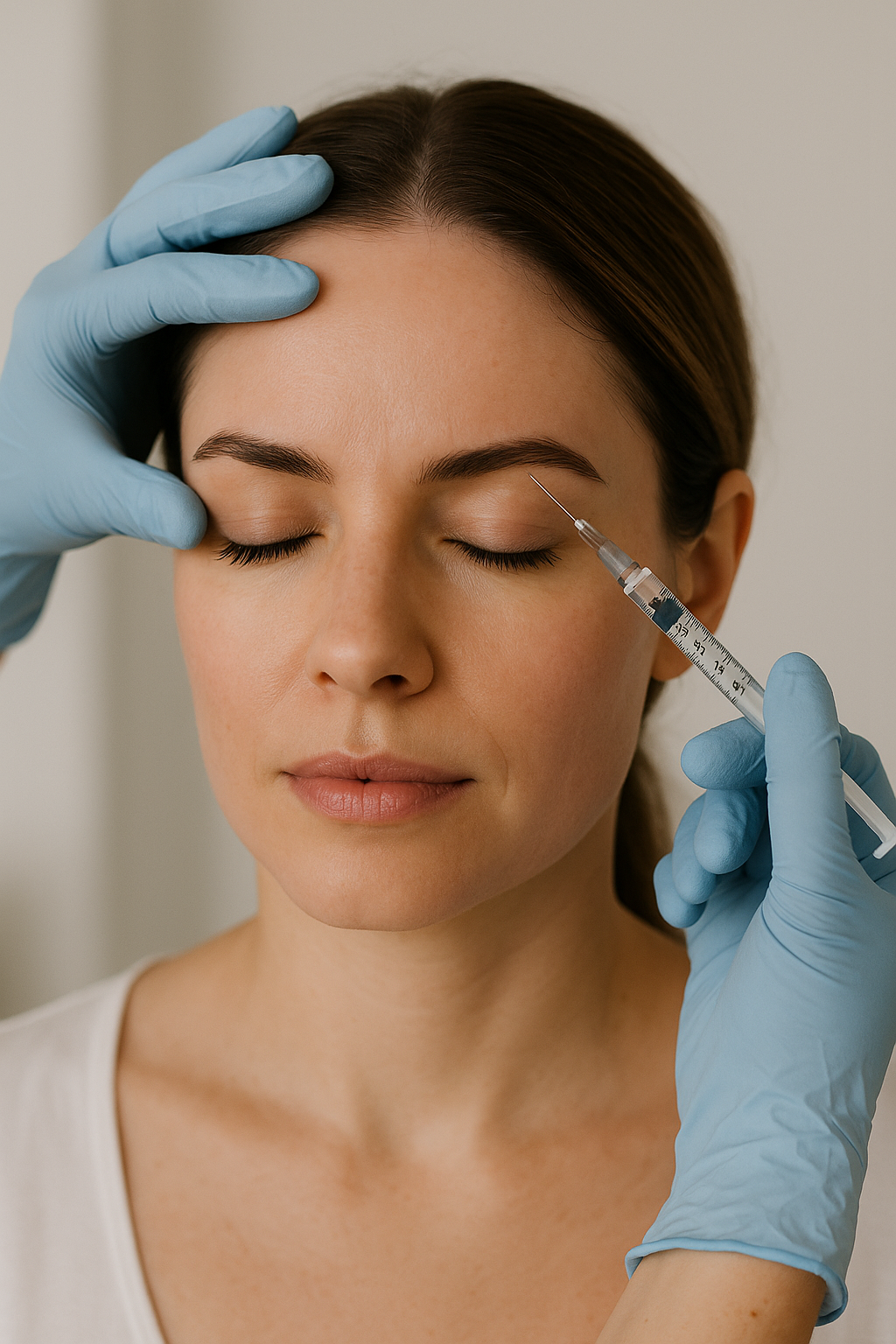
PRP (platelet-rich plasma)
Whether used for facial rejuvenation, hair restoration, or combined with microneedling, PRP involves multiple injections. Topical anesthesia is potentially valuable for scalp injections during hair restoration procedures and for facial PRP where multiple passes may be needed.
Laser and energy-based therapies
Laser hair removal, fractional laser resurfacing, vascular laser, and other energy-based procedures may all benefit from appropriate topical anesthesia to support patient comfort throughout each session.
Women’s health procedures
MonaLisa Touch® and vaginal rejuvenation
These CO2 laser vaginal rejuvenation procedures address concerns related to vaginal health and may require specialized topical anesthesia designed for delicate vaginal tissue.
Topical Anesthetic for Cosmetic Procedures
Town & Country Compounding has unique ways for creating the best compounded topical anesthetic prescriptions for patients getting the Morpheus8 and other cosmetic treatments that are enhanced with the use of topical anesthetics.
Understanding the active ingredients
Our formulations use a variety of anesthetic agents, each with unique properties. We carefully combine these agents to create formulations for specific procedures:
- Lidocaine is an amide-class anesthetic that provides reliable, moderate-duration numbing. It’s one of the most studied and trusted topical anesthetics in dermatology, with an excellent safety profile when used appropriately.
- Tetracaine is an ester-class anesthetic known for its potent numbing effect and longer duration of action compared to lidocaine alone. When combined with other anesthetics, it enhances the depth and quality of anesthesia.
- Benzocaine is an ester-class anesthetic that provides rapid onset of surface anesthesia. It’s particularly useful in combination formulations where quick initial numbing is desired.
- Prilocaine is an amide-class anesthetic similar to lidocaine but with a slightly different pharmacologic profile. It’s commonly used in combination with lidocaine in eutectic mixtures for enhanced skin penetration and effectiveness.
Research shows that combination anesthetic formulations often outperform single-agent products, providing faster onset, deeper penetration, and more effective pain control for various aesthetic procedures. Our formulations strategically combine these agents to help maximize efficacy while maintaining safety.
Our preferred formulations
Lidocaine 23% – Tetracaine 7% ointment
Commonly requested for: Morpheus8® and fractional RF microneedling
This high-strength dual-agent combination is our go-to recommendation for radiofrequency microneedling procedures like Morpheus8®. The ointment base provides skin adhesion and prolonged contact time, which is essential for achieving deep anesthesia needed for these more intensive procedures. The 23% lidocaine concentration — significantly higher than over-the-counter products — combined with 7% tetracaine may deliver superior pain control for procedures that penetrate deeper into the skin.
Our formula may make a difference
Morpheus8® may benefit from combination anesthetic therapy for maximum comfort, and we consistently receive feedback from practitioners that our formula is preferred over others. The specific concentration and ointment base we’ve developed may provide the deep, lasting numbing effect that makes these advanced therapies much more comfortable for patients.
Application
Typically applied 30–60 minutes before the procedure under occlusion.
Lidocaine 23% – Tetracaine 7% vaginal gelEmpty heading
Commonly requested for: MonaLisa Touch® and vaginal rejuvenation
This specialized formulation uses the same powerful dual-agent anesthetic combination but is specifically designed for the delicate vaginal tissue addressed during MonaLisa Touch® and similar CO2 laser vaginal rejuvenation procedures. The vaginal formulation is optimized for the unique pH and environment of vaginal mucosa, addressing both safety and effectiveness in this sensitive area.
Application
Applied before vaginal laser procedures according to provider protocol.
Benzocaine 20% – Lidocaine 6% – Tetracaine 4% ointment
Commonly requested for: Laser procedures
This triple-combination ointment is ideal for laser procedures, including laser hair removal, vascular lesions, and nonablative laser resurfacing. The benzocaine provides rapid initial numbing, while lidocaine and tetracaine work together to sustain the anesthetic effect throughout the procedure. The ointment base is potentially more well-suited for laser procedures, as it stays in place and doesn’t interfere with laser delivery.
Application
Generally applied 20–45 minutes before laser therapy.
Benzocaine 20% – Lidocaine 6% – Tetracaine 4% cream
Commonly requested for: Needle-based procedures
For injectable therapies like dermal fillers, neuromodulators (Botox®, Dysport®, Xeomin®), Kybella®, PRP injections, and other needle-based procedures, our cream formulation may offer the perfect balance. The cream base potentially absorbs well and provides a clean surface for injection. The triple anesthetic combination supports patients in remaining comfortable during multiple injection sites. This is potentially valuable for extensive filler therapies, sensitive areas like the lips, Kybella® requiring numerous injections, or PRP scalp injections for hair restoration.
Application
Typically applied 20–30 minutes before injection procedures.
Clinical evidence and safety
The effectiveness of combination anesthetic formulations containing lidocaine, tetracaine, benzocaine, and prilocaine is well-documented in dermatologic literature. Studies have shown that multi-agent formulations provide superior anesthesia compared to single-agent products for laser and fractional procedures. The American Academy of Dermatology recommends topical anesthetics as first-line agents for nonablative laser and minor dermatologic procedures.
Important safety considerations:
- These are prescription-strength formulations that should only be used under healthcare provider supervision.
- Application should be limited to recommended areas and durations to avoid systemic absorption.
- Providers should consider patient factors, including pregnancy, nursing status, and known allergies.
- Benzocaine-containing products should be used cautiously in young children due to rare risk of methemoglobinemia.
- Patients with known ester allergies (affecting benzocaine and tetracaine) or amide allergies (affecting lidocaine and prilocaine) should avoid products containing those specific agents.
- Prilocaine should be used with caution in infants and individuals with G6PD deficiency due to methemoglobinemia risk.
Why choose compounded formulations?
Unlike commercial products with fixed concentrations, compounded topical anesthetics offer several potential advantages:
- Customization: Concentrations and agent combinations can be optimized for specific procedures and patient needs
- Fresh Preparation: Each batch is freshly compounded, supporting potency and stability
- Quality Ingredients: We use only pharmaceutical-grade active ingredients and bases
- Provider Partnership: We work directly with your provider
- Specialized Applications: We can create formulations for unique anatomical areas or specific procedure requirements
- Practice Convenience: Patient-specific prescriptions can be shipped and billed directly to your office
Working with your providerEmpty heading
Your healthcare provider will select the most appropriate topical anesthetic based on your specific procedure, skin sensitivity, application area, and medical history. They’ll provide detailed instructions on application timing and technique to maximize numbing effectiveness while maintaining safety.
For practitioners
Are you looking for reliable topical anesthetic solutions for your practice? See our prescription order form for various procedures that often need compounded topical anesthetics. We’re here to support your practice with formulations that deliver consistent results and keep your patients comfortable. Our streamlined ordering and billing process makes it easy to integrate our specialized anesthetics into your workflow.
The Town & Country Compounding difference
Consistency with anesthetic formulations
The pleasant texture and smooth application of our proprietary base will be consistent with each application. We understand that practitioners and patients rely on predictable performance, which is why every batch of our topical anesthetics maintains the same high-quality characteristics — from texture to efficacy.
Smooth application with high concentrations
At Town & Country Compounding, our labs have advanced equipment that reduces particle size to eliminate grit even with the highest drug concentrations. This supports a smooth application that is pleasant for the patient experience. While many high-strength anesthetic formulations can feel grainy or difficult to spread, our specialized compounding process creates a refined product that glides smoothly onto the skin, enhancing both ease of application and patient comfort.
Our commitment to quality
Town & Country Compounding is dedicated to providing pharmaceutical-grade topical anesthetics that meet the highest standards of safety, efficacy, and consistency. Our formulations are prepared in our state-of-the-art facility using only premium ingredients, rigorous quality control processes, and precise compounding techniques. We work closely with healthcare providers to help ensure every patient receives the most appropriate anesthetic solution for their specific procedure.
Get started
At Town & Country Compounding, we’re committed to supporting both providers and patients in achieving the best possible outcomes. Our topical anesthetic formulations represent a blend of evidence-based medicine, pharmaceutical expertise, and patient-centered care.
For providers interested in partnering with us or patients seeking more information about our compounded anesthetics, we invite you to reach out and contact Town & Country Compounding.
These statements have not been evaluated by the FDA. Compounded medications are not FDA-approved. This blog is for informational purposes only and does not constitute medical advice. Always consult with a qualified healthcare provider before using any topical anesthetic product.
References
- Kundu S, Achar S. Principles of Office Anesthesia: Part II. Topical Anesthesia. American Family Physician. 2002;66(1):99–102. Link
- Greveling K, Prens EP, Ten Bosch N, van Doorn MB. Comparison of Lidocaine/Tetracaine Cream and Lidocaine/Prilocaine Cream for Local Anaesthesia During Laser Treatment of Acne Keloidalis Nuchae and Tattoo Removal: Results of Two Randomized Controlled Trials. The British Journal of Dermatology. 2017;176(1):81–86. Link
- Illg C, Krauss S, Kersten A, Daigeler A, Wenger A. Influence of Topical Anesthesia on Superficial Sensitivity: A Double-Blind, Randomized, Placebo-Controlled Study on 48 Healthy Subjects. Dermatologic Surgery : Official Publication for American Society for Dermatologic Surgery [Et Al.]. 2020;46(12):1593–1598. Link
- El-Fakahany H, Medhat W, Abdallah F, Abdel-Raouf H, Abdelhakeem M. Fractional Microneedling: A Novel Method for Enhancement of Topical Anesthesia Before Skin Aesthetic Procedures. Dermatologic Surgery : Official Publication for American Society for Dermatologic Surgery [Et Al.]. 2016;42(1):50–5. Link
- Cohen JL. Pain Management With a Topical Lidocaine and Tetracaine 7%/7% Cream With Laser Dermatologic Procedures. Journal of Drugs in Dermatology : JDD. 2013;12(9):986–9. Link
- Jain R, Arias GM, Naranjo P, et al. The Use of a Self-Occluding Topical Anasthetic in Daily Practice: A Non-Interventional Study. Journal of Drugs in Dermatology : JDD. 2018;17(4):413–418. Link
- Alster TS. The Lidocaine/Tetracaine Peel: A Novel Topical Anesthetic for Dermatologic Procedures in Adult Patients. Dermatologic Surgery : Official Publication for American Society for Dermatologic Surgery [Et Al.]. 2007;33(9):1073-81. Link
- Sutton E, Hanke CW. Topical Anesthetic Use in Cosmetic Dermatology. Journal of Drugs in Dermatology : JDD. 2023;22(3):256–259. Link
- Kouba DJ, LoPiccolo MC, Alam M, et al. Guidelines for the Use of Local Anesthesia in Office-Based Dermatologic Surgery. Journal of the American Academy of Dermatology. 2016;74(6):1201–19. Link
- Sobanko JF, Miller CJ, Alster TS. Topical Anesthetics for Dermatologic Procedures: A Review. Dermatologic Surgery : Official Publication for American Society for Dermatologic Surgery [Et Al.]. 2012;38(5):709–21. Link
- Gobbato C, Gobbato A, Magalhães TB, et al. Randomized, Double-Blind, Phase III Clinical Study of a Novel Nanotechnological Topical Anesthetic Formulation Containing Lidocaine 25 mg/G and Prilocaine 25 mg/G (Nanorap) in Skin Phototypes I-Iii Patients With Ablative Fractional CO Laser Treatment Indication in the Forehead. Lasers in Surgery and Medicine. 2019;51(7):609–615. Link
- Relador Pak with Occlusive Dressing. Food and Drug Administration. Updated date: 2015-06-09. Link




